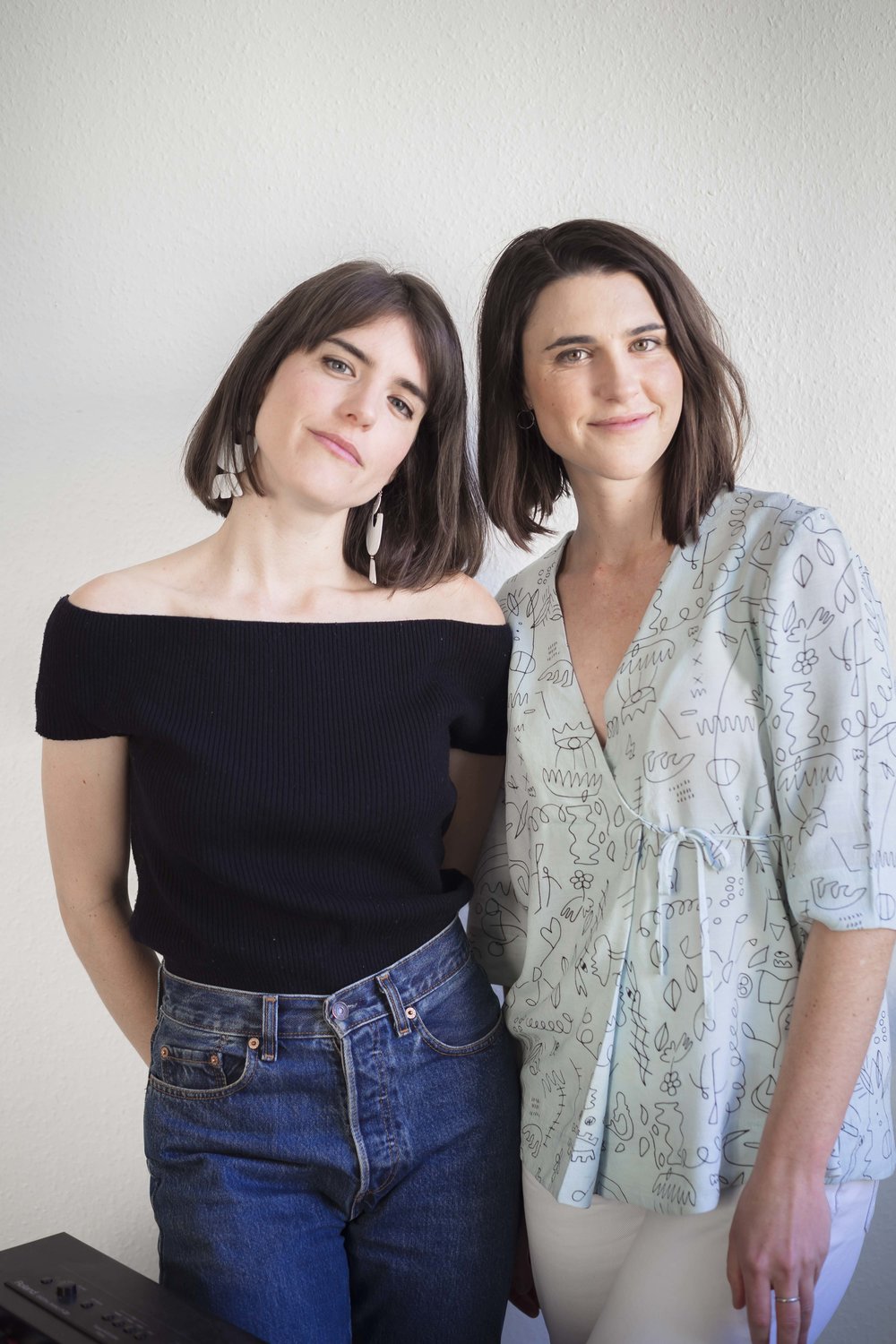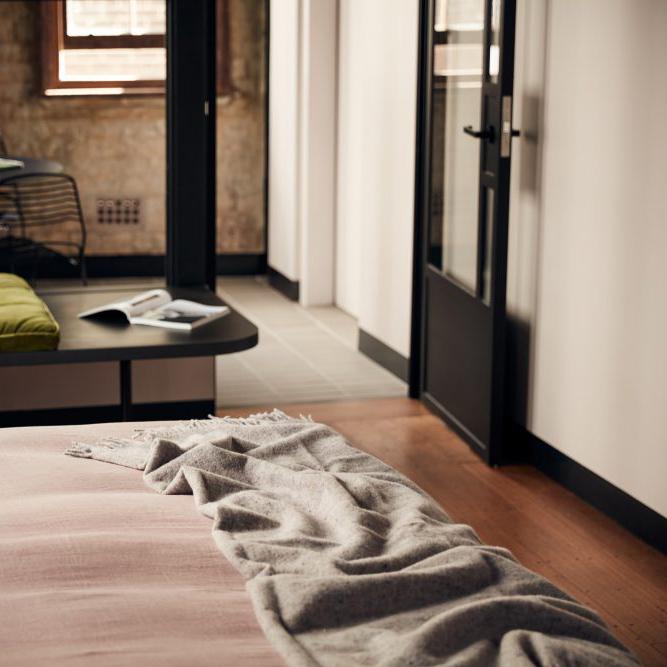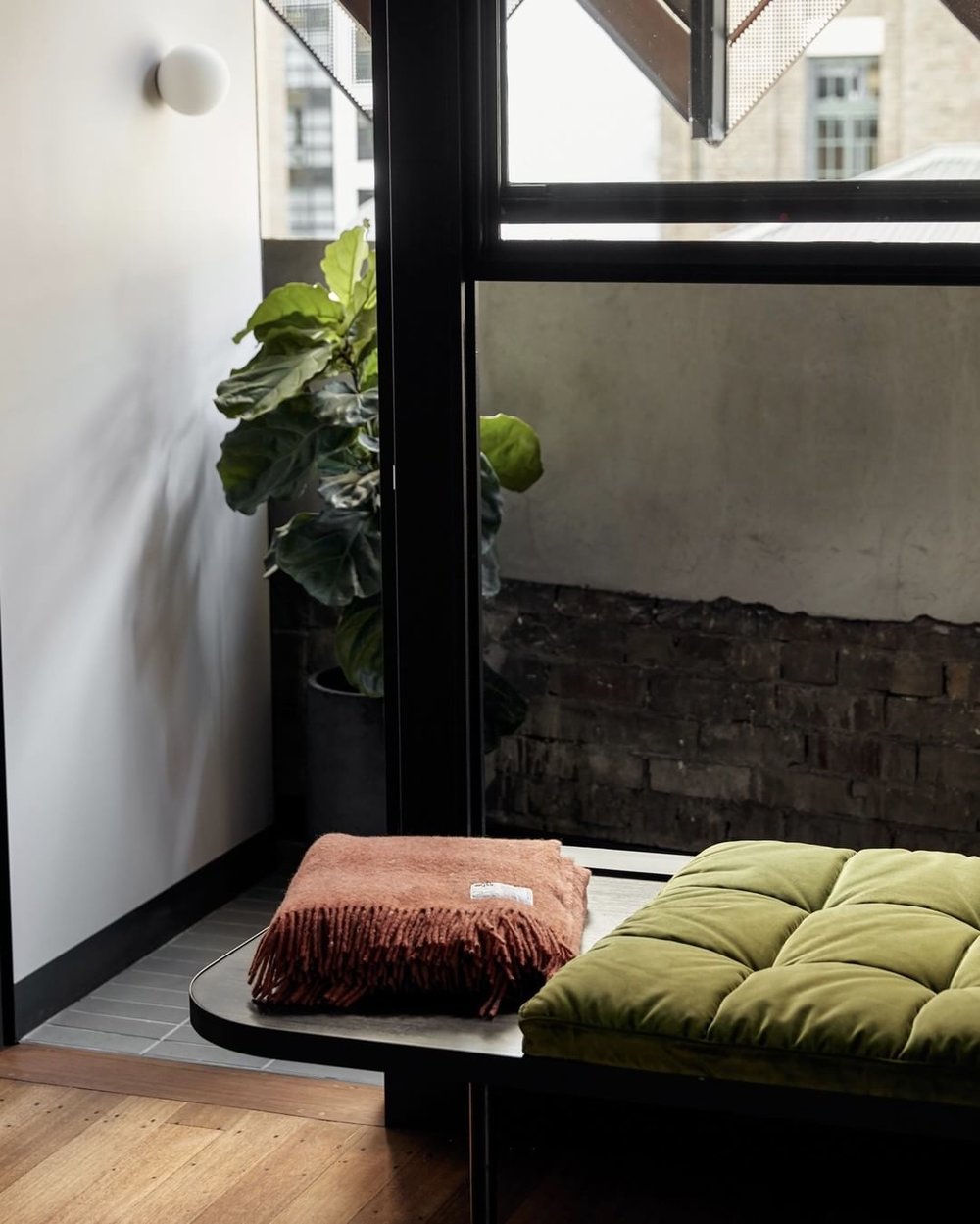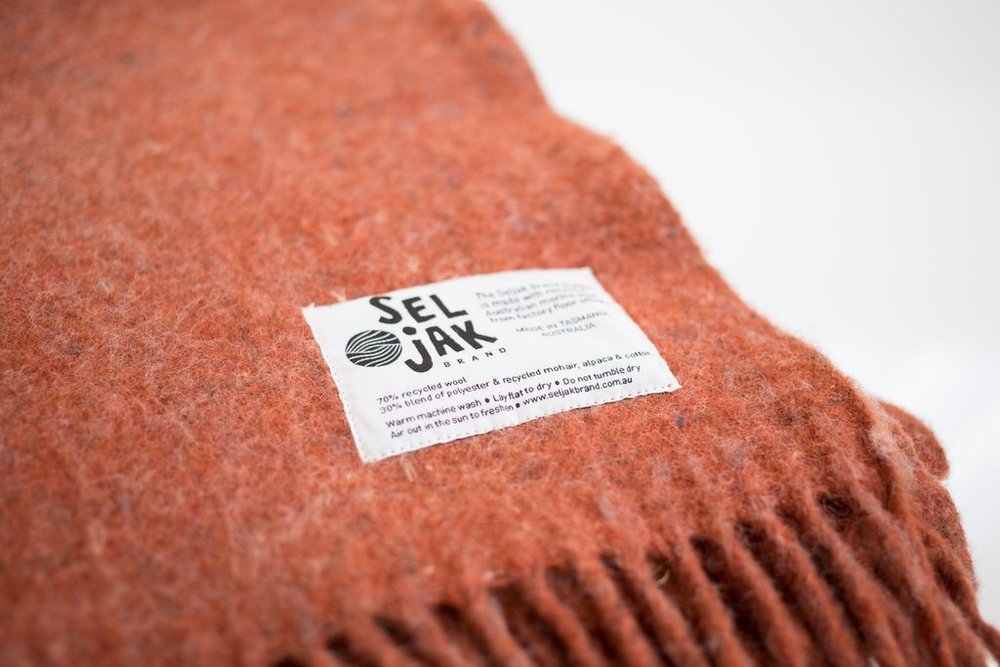We caught up with Karina Seljak, Co-Founder and Director of the Tasmanian based SELJAK BRAND, to talk about their closed loop design approach, and vision for a world without waste…

SELJAK BRAND
MEET | KARINA SELJAK, CO-FOUNDER & DIRECTOR
_
TELL US ABOUT YOUR OWN INDUSTRY BACKGROUNDS AND WHAT BROUGHT YOU TO TEXTILES?
Though a trained fashion designer, I worked in artisanal small-batch food production in New York City after graduating. It only took interning for free for 6 months for me to see the monumental amount of waste the fashion industry generated in it’s rapid production and fast-expiring trend-based collections. I found the food community was far more innovative.
Sam Seljak’s training was in economics and journalism. She had worked at an Indigenous design agency and had started several other community initiatives including No Lights No Lycra Brisbane and The Box art gallery.
We wanted to bring together my design and product experience and Sam’s purpose-driven business background when starting Seljak Brand. We work like yin and yang in that way. Our strengths complement one another.
_
AND HOW DID ‘SELJAK BRAND’ COME TO BE? & HOW HAVE YOUR PERSONAL VALUES SHAPED YOUR WORK?
Seljak is our last name! It means ‘farmer’ in Slovenian and speaks to our values including heritage and resourcefulness. Seljak Brand’s vision is a world without waste. We see that all waste material can be used as a resource to create something useful, and even beautiful. At the moment, the Seljak Brand closed-loop merino blankets tell this story.
We were raised in a household that that valued resourcefulness and minimalism. Our paternal grandparents were refugees from Slovenia to Canada and their experience affected and inspired the whole family. On a micro level, for instance, they’d never use a tea bag just once. Our mother also instilled in us a curiosity for how and where things were made and a quality-not-quantity attitude. Of course, as teenagers this was infuriating! As we matured we understood the value of this mentality.

“As much as we love fashion, we gather much of our inspiration for sustainable practises from other sectors – the cross-pollination seems to be where the magic lies!”
_
WHEN IT COMES TO ‘SUSTAINABILITY’ , WHAT DOES THE TERM MEAN FOR SELJAK BRAND?
We use circular economy and closed loop methodologies to design our products in order to reduce waste sent to landfill and reduce the extraction of raw resources to make new products.
Our blankets are made from the factory floor offcuts of a wool mill. These scraps from luxury blanket production are too good to waste and become the basis of our recycled yarn. We can also re-manufacture or recycle the blankets at the end of their useful life, creating new blankets and maintaining the high value of the material.
Materiality is also important. Wool is an incredible resource; it’s biodegradable, renewable, antibacterial (meaning you rarely need to wash it), water resistant and fire retardant. While we don’t want to directly contribute to the demand for animal products, we are lucky to use the waste from luxury merino blanket production to create our products. If this resource runs out, we will move on to another fibre type of which there is an abundance.
And longevity is key. Blankets made at the mill that we manufacture at have been known to outlive their owners. They are incredibly high quality and have a long life span. Longevity is priority, even before remanufacture!
_
FROM OFFCUTS ON THE FACTORY FLOOR TO BLANKETS… HOW DOES THIS MANUFACTURING PROCESS WORK?
These offcuts, which are ad hoc pieces of yarn or fabric, are put through a ragging machine that shreds them into a consistent fibre length. This is carded (to align all the fibres) and spun into a new yarn. They yarn is then woven into blankets.
You can take a peek at the Seljak Brand end-to-end process below! MORE HERE >>
_
WHY WAS AUSTRALIAN MADE AN IMPORTANT FACTOR FOR YOU?
There are beautiful resources in Australia that we think should be celebrated, and among our generation wool has lost its lustre even though it’s a key component of our history and a powerful fibre type.
Of course, manufacturing an Australian resource in Australia makes sense so we decided to work with the last remaining mill in Tasmania. Keeping manufacturing onshore preserves heritage skills that would otherwise be lost, and fosters a self-reliant attitude. It allows for innovation and collaboration because the equipment is closer at hand, smaller order quantities are possible and Australian businesses are able to work more closely together.
Australia has a high standard of worker rights, and we enjoy the face-to-face experience of doing business locally.
… and the challenges?
Manufacturing onshore is expensive and even though it’s local, lead times can be long. As a diminished sector, Australian manufacturers work with limited investment and resources.
_
ARE THERE ANY BUSINESS MODELS OR WAYS OF APPROACHING SUSTAINABILITY THAT PARTICULARLY IMPRESS YOU?
Loop Growers in Brisbane turn cafe waste into compost, and they use the compost to grow food that is delivered back to the same cafe. It’s a fantastic initiative as food waste is a big problem in Australia. Like textiles, food generates methane when it breaks down in landfills. When released into the atmosphere, methane is 20 times more potent a greenhouse gas than carbon dioxide.
As much as we love fashion, we gather much of our inspiration for sustainable practises from other sectors – the cross-pollination seems to be where the magic lies!

_
HOW DO YOU APPROACH RESEARCH & DEVELOPMENT IN YOUR BUSINESS?
We always follow our north star – to make waste into useful and beautiful things. So we listen carefully what the Australian market needs, we look to successful models in other industries and overseas and we collaborate with businesses, like brands and manufacturers, to divert waste from landfill and build new products.
Ever since we launched two and a half years ago we’ve been asked to recycle various consumer and business’ textile waste. In June 2017 we crowdfunded $32,000 through ING’s Dreamstarter program to develop a lighter-weight recycled blanket for the warmer months from fashion industry waste. We’ve taken the high quality cotton, linen, bamboo and merino offcuts from Citizen Wolf’s t-shirts and ran the feedstock through the equipment that makes our blankets. Although we’ve had mixed results so far, we’ll press ahead as succeeding would open new doors for us, the mill we work with and companies in Australia that want sustainable solutions for their textiles waste.
In 2016 I also co-facilitated a business roundtable as an active enquiry into the question, ‘Are circular models for denim possible in Australia?’ with key industry stakeholders in a pre-competitive environment. The Better Threads: Findings from the Business Roundtable report outlines opportunities, limitations and recommendations to create circular systems for denim. Pure waste streams make for higher quality waste-to-resource products.

“We always follow our north star – to make waste into useful and beautiful things. So we listen carefully what the Australian market needs, we look to successful models in other industries and overseas and we collaborate with businesses, like brands and manufacturers, to divert waste from landfill and build new products.”
_
SO WHAT’S NEXT?
On 10 February we’re co-hosting a panel discussion called ‘Disrupting fashion to save the world: How fashion can limit global warming to 1.5°C’ at this year’s Sustainable Living Festival in Melbourne. We’ll explore how fashion can go past greening it’s current model and drastically and quickly halt its contribution to global warming with leading voices in fashion and the climate.
Meanwhile, we’ll keep innovating! In late 2018 we received $15,000 in funding by Macquarie Group Foundation through their Kick Starter program to continue building new products from textiles waste with Australian manufacturers, accessing new waste streams and more markets. It’s early days, so watch this space.
_
AND LASTLY - WHERE ARE YOUR LOCAL TEXTILE & FASHION GO TO’S?
1. Well Made Clothes, the fashion platform where you can shop by your values - MORE HERE >>
2. Clare Press’ amazing work: the Wardrobe Crisis podcast, Vogue editorial and her new book Rise & Resist - MORE HERE >>
3. The Australian label called North that celebrates textile design and artwork by Indigenous artists living remotely on country - MORE HERE >>
Follow the SELJAK BRAND story on Instagram, LinkedIn and Facebook as @seljakbrand, and head along to their website below…

© 2024 AUSTRALIAN FASHION COUNCIL All Rights Reserved